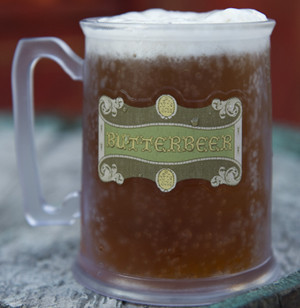Amazon is going to start selling food.
 |
| Amazon is considering rolling out this new logo. |
There is already a bevy of food-to-your-door companies, delivering curated snack boxes, exotic beef jerky, and whole meals worth of preparable ingredients. Perhaps those niche providers will never even get the chance to threaten their brick and mortar counterparts before the Amazonian colossus eats them all. Grocery is brutal.
Gardens are being repackaged as innovative, human interest story.
I'll come right out and say it: I hate lawns. They look nice enough, but I despise the amount and regularity of labor involved. I loathe the implicit pressure to be laboring away at my lawn, lest the proverbial Joneses raise their eyebrows at my lack of investment in close-shaving the earth. I can't even find a colorful enough verb to illustrate how I feel about being solicited by TruGreen salesmen. And the chorus of mowers, all summer long... So if we need to make gardens a "new and exciting trend in environmentally conscious micro-farming," so be it. I'd rather see turnips everywhere than platonically ideal lawns, whatever you want to call it.
As this NPR.com story explains, a guy named Chris Castro has convinced 10 of his neighbors to abandon their joyless, purposeless lawns in favor of growing greens and such. I must say, having lived in Florida, and knowing the way that the average suburban Floridian derives great daily meaning from curating their lawn, this is impressive.
Castro is the founder of Fleet Farming, and his goal is use the legal limit--60%--of his neighbors' yards for growing vegetables. His company is powered entirely by volunteers who ride bicycles. They gather up the produce and sell it at the local farmers market.
As the Fleet Farming website points out, a lot of pollution comes from all the transportation necessary to sustain our food systems. (This is one of the many reasons Foods For Living is committed to bringing so many local and Michigan-made products to our store.) If you care about the earth and don't have a lawn, or even if you care about the earth AND have a lawn, or maybe don't care one hoot about the earth and have an immaculate lawn, or...all I'm saying is you can't do much better than getting your (100% organic) produce from us.
That said, do you think your community could benefit from lawn-farming like this?
Food Competition based on Rap Lyrics
A young Brooklyn woman named Syreeta Gates is hosting her second annual Stay Hungry cooking competition. (No, it doesn't involve a bakeoff where Twisted Sister plays Stay Hungry in its glorious entirety.) The event is a culinary arts competition for high school students in Brooklyn, where dishes draw inspiration from hip hop lyrics. As you probably know, rap and food are no strangers. Many MCs lamenting their hardscrabble early years in song tell us the sad fare that was their lot, usually before contrasting it with the fine dining they now consume like every day. Because there's a broad spectrum of food lyrics to draw from, the Stay Hungry competition should include everything from fettuccine to steak to grilled cheese. No word on whether there will be gin, but juice is confirmed.
As the Fleet Farming website points out, a lot of pollution comes from all the transportation necessary to sustain our food systems. (This is one of the many reasons Foods For Living is committed to bringing so many local and Michigan-made products to our store.) If you care about the earth and don't have a lawn, or even if you care about the earth AND have a lawn, or maybe don't care one hoot about the earth and have an immaculate lawn, or...all I'm saying is you can't do much better than getting your (100% organic) produce from us.
That said, do you think your community could benefit from lawn-farming like this?
Food Competition based on Rap Lyrics
A young Brooklyn woman named Syreeta Gates is hosting her second annual Stay Hungry cooking competition. (No, it doesn't involve a bakeoff where Twisted Sister plays Stay Hungry in its glorious entirety.) The event is a culinary arts competition for high school students in Brooklyn, where dishes draw inspiration from hip hop lyrics. As you probably know, rap and food are no strangers. Many MCs lamenting their hardscrabble early years in song tell us the sad fare that was their lot, usually before contrasting it with the fine dining they now consume like every day. Because there's a broad spectrum of food lyrics to draw from, the Stay Hungry competition should include everything from fettuccine to steak to grilled cheese. No word on whether there will be gin, but juice is confirmed.
Stop back soon for another smorgasbord of tasty food news morsels.
























